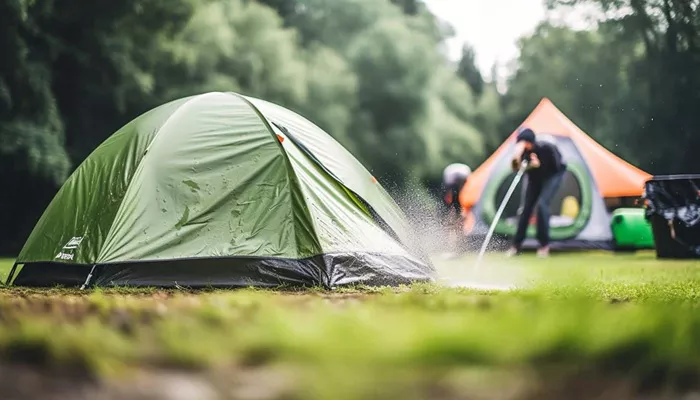Keeping your tent clean is essential for its longevity and performance. Dirt, mold, and stains can damage the fabric, weaken waterproof coatings, and even attract pests. But how do you clean a tent properly without ruining it?
In this guide, we’ll cover everything you need to know—from basic cleaning to deep stain removal—so your tent stays in top condition for years.
Why Cleaning Your Tent Matters
A dirty tent isn’t just unpleasant—it can cause real damage. Here’s why regular cleaning is important:
- Prevents fabric degradation: Dirt and grime can break down tent materials over time.
- Maintains waterproofing: Mud and oils can clog the fabric’s pores, reducing breathability.
- Avoids mold and mildew: Moisture + dirt = a perfect breeding ground for fungi.
- Keeps pests away: Food stains and odors attract bugs and critters.
Now, let’s dive into the best cleaning methods.
Basic Tent Cleaning: Removing Dirt and Debris
Before deep cleaning, always start with a simple brush-off.
What You’ll Need:
- Soft-bristle brush (a toothbrush works for small areas)
- Mild soap (like Nikwax Tech Wash or Dr. Bronner’s)
- Cold water
- Sponge or microfiber cloth
Step-by-Step Process:
- Shake It Out: Remove loose dirt by turning the tent upside down and shaking it.
- Brush Off Stubborn Dirt: Gently scrub the fabric with a soft brush. Avoid harsh scrubbing—it can damage coatings.
- Spot Clean Stains: Use a damp cloth with a bit of soap to wipe away marks.
- Rinse Thoroughly: Never use a pressure washer! A gentle hose rinse is enough.
Pro Tip: Always clean your tent after a trip, not before storing it. Lingering moisture leads to mold.
Deep Cleaning: Tackling Stains and Odors
Sometimes, basic cleaning isn’t enough. For tough stains (mud, sap, bird droppings), try these methods.
Removing Common Stains:
- Mud: Let it dry, then brush off. Use a damp cloth for residue.
- Sap or Tree Resin: Rubbing alcohol or hand sanitizer breaks it down. Test on a small area first.
- Mold & Mildew: Mix vinegar and water (1:1), gently scrub, then rinse. Avoid bleach—it weakens fabric.
- Food & Grease Stains: Baking soda paste (water + baking soda) works well.
Eliminating Bad Smells
If your tent smells musty:
- Set it up in sunlight for a few hours (UV helps kill odor-causing bacteria).
- Sprinkle baking soda inside, leave for an hour, then vacuum.
Restoring Waterproofing After Cleaning
Cleaning can wear down the tent’s DWR (Durable Water Repellent) coating. Here’s how to restore it:
Option 1: Spray-On Waterproofer
- Products like Nikwax TX.Direct work well.
- Apply evenly, then let dry completely.
Option 2: Heat Reactivation (for older tents)
- Some DWR coatings revive with low heat.
- Use a dryer on low heat for 20-30 minutes (check manufacturer instructions first).
What NOT to Do When Cleaning a Tent
Avoid these common mistakes:
- Machine washing: Agitation damages seams and coatings.
- Harsh detergents: They strip waterproofing. Stick to mild soaps.
- Hot water: It can degrade fabric and seams.
- Storing a damp tent: Always dry it completely to prevent mold.
How Often Should You Clean Your Tent?
- After every trip: Brush off dirt and air it out.
- Deep clean once a year: Or more if heavily used.
Conclusion
A clean tent lasts longer and performs better. With the right techniques, maintenance is easy. Remember:
- Clean gently
- Avoid harsh chemicals
- Always dry before storage
Follow these steps, and your tent will stay in great shape for many adventures!
Do you have a favorite tent-cleaning hack? Share it in the comments!
Related topics:
How to Use Nordic Walking Sticks Properly?

